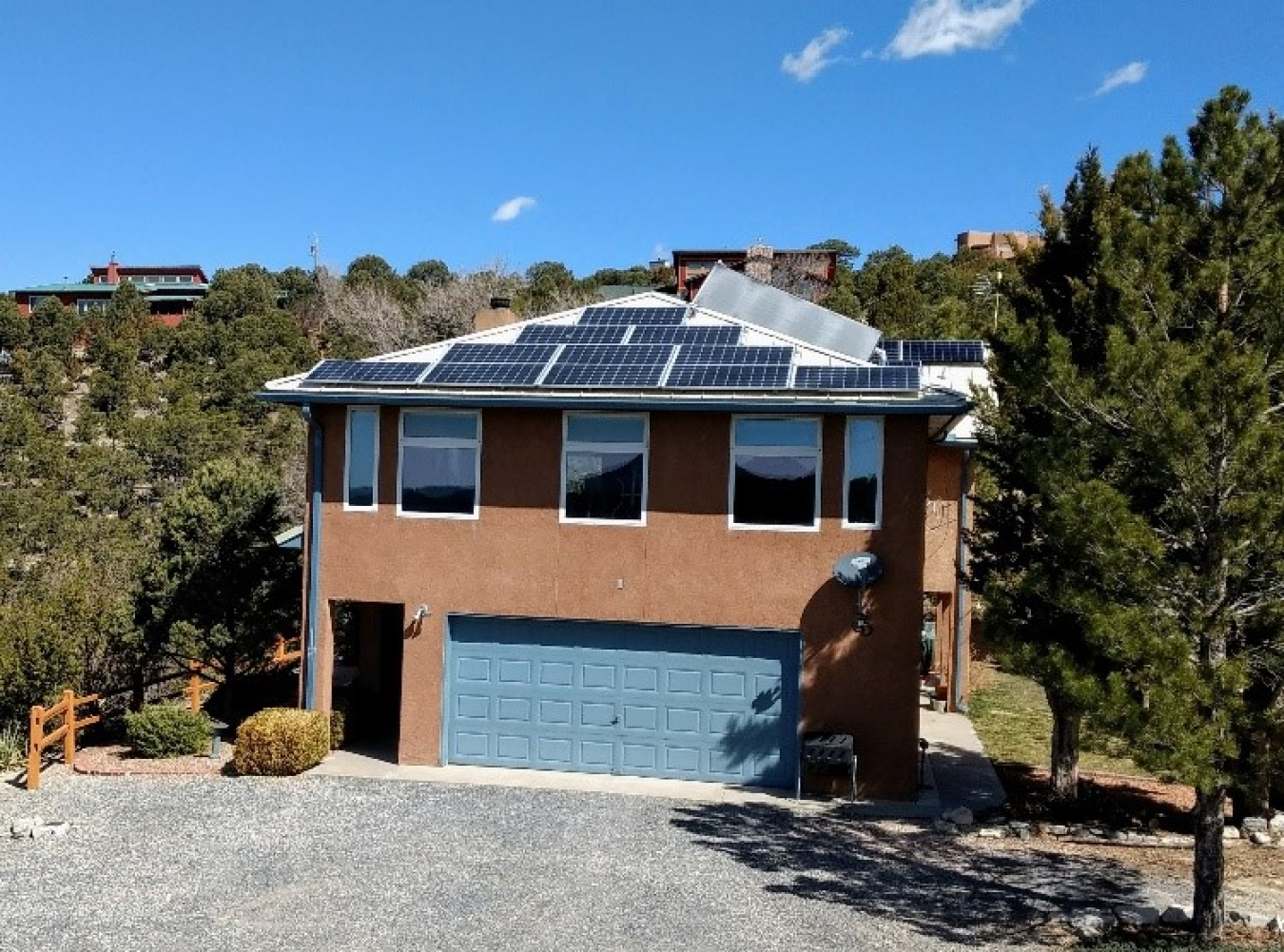NNSA’s Wayne Evelo takes sustainability home with him.
National Nuclear Security Administration
April 16, 2021
Have you ever wondered if it is possible to convert an existing older home into a net zero energy and highly resilient home? Or simply, how to live a life committed to sustainability? Well, NNSA’s own Wayne Evelo is on a journey to do just that.
We have always considered the lifecycle costs of the improvements we make and know all the upgrades we’ve made will pay for themselves in less than eight years.
Some might say he started small by making his family’s home as energy efficient as possible, recognizing that energy efficiency is ultimately cheaper than energy production, outfitting it with only Energy Star appliances and LED lights that last up to 30 years. Wayne likes to joke about including the lights in his will, hoping his kids don’t fight over them!
Climate change driven hailstorm made it happen
One fateful evening in Albuquerque, New Mexico, a hailstorm hit while Wayne and his wife were out for an anniversary dinner as their teenage daughter stayed home babysitting her younger brother. The golf ball-sized hail destroyed the family’s asphalt shingle roof and broke through the plastic skylights.
Since the insurance company was willing to pay to have the roof and skylights replaced, it was all the motivation the family needed to install a 500-square foot passive solar addition (and later a solar hot water panel) on the newly crafted roof with a pitch specifically angled and designed to hold solar electric panels. State and federal tax credits reduced the cost of the solar systems by more than a third. The metal roof with a low solar reflective index is, of course, resistant to hail and fire, and includes Energy Star skylights with tempered low-e glass.
Insulation was added to the roof and increased in the existing walls, and he had all the windows replaced with high-performance ones. Two thermal walls were also added to the second story, and the southern roof was extended slightly farther than the other overhangs to completely shade the windows in the summer. All these modifications are designed specifically to keep the house cooler in the summer but warmer in the winter. For example, behind the windows are 4-inch-thick concrete blocks painted black. They are heated up by the sun during the day and slowly release heat into the house at night. In the summer, they are shaded and keep the house cool, because all that material doesn’t heat up as quickly as that found in a typical house.
Resilient high efficiency solar homes cost less to run, perform better in a disaster, are better equipped to handle climate change, and sell faster and for a higher price than standard homes.
Resilience improvements
The home isn’t just incredibly sustainable, but it’s also designed to be resilient no matter the circumstance. A winter storm hits? That’s why a free-standing propane fireplace was added to the second floor. It heats the second story with no additional power required, even as an airtight fireplace heats the first floor. The house gets water from a well-fed storage tank up on a nearby hill, which holds a week’s worth of water. Meanwhile, the solar hot water system, which feeds a standard propane hot water heater, has an 80-gallon storage tank. The hot water system has also been prewired for a battery storage system which Wayne jokes he plans to buy, “Once battery prices drop some more and the account balance in the bank increases.”
Transportation solution
Wayne’s World doesn’t end with his sustainable home. His set of wheels is super cheap, quiet, and quick to drive. That’s right! Wayne’s drives a plug-in hybrid that goes about 40 miles on the battery before it needs to transition to gasoline. An electric car costs about 4 cents in electricity per mile to run compared to a regular car that costs about 10 cents in gasoline per mile. Most of his family trips are short, and the car is charged with solar electricity from the roof. In over 65,000 miles, the Evelo family has averaged over 230 mpg using electricity and gasoline. For perspective, Wayne says they fill the car’s tank once every three months and changes the oil once every two years, whether it needs it or not. The car can turn the electric motor into a generator and use it to slow the car while charging the battery, meaning the brakes hardly get used, reducing the need to replace them anytime soon. Always one to be innovative, he’s not convinced he can’t power his home with his hybrid car’s 17kWh battery if the electric grid goes down.
Excellent journey continues
Ultimately, the Evelo’s home solar systems save enough energy and gasoline to cover all their utility costs. While the house is not yet a net zero-energy home – that would require replacing the 25-year-old propane furnace with a heat pump – the family is always looking to make improvements that are better for both the environment and wallet. “We have always considered the lifecycle costs of the improvements we make and know all the upgrades we’ve made will pay for themselves in less than eight years,” Wayne says. It doesn’t hurt that the value of the house increased with all the modifications and upgrades. “Resilient high efficiency solar homes cost less to run, perform better in a disaster, are better equipped to handle climate change, and sell faster and for a higher price than standard homes.”

